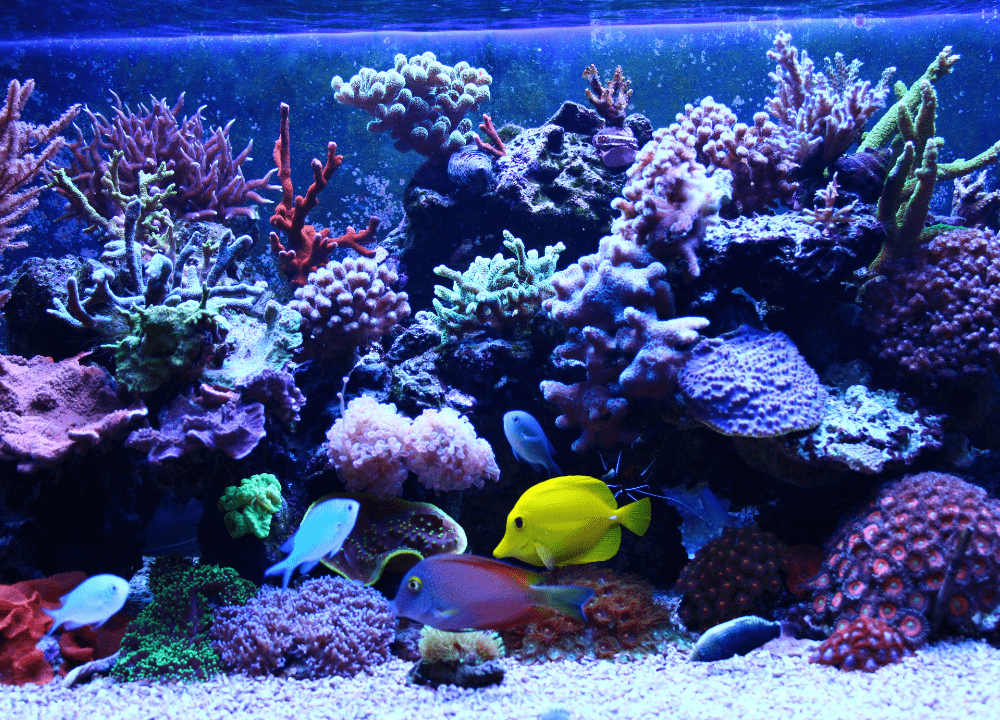Thirteen perfect corals for your reef aquarium include the hardy Frogspawn, the peaceful Toadstool Leather, and the vibrant Green Star Polyp. These species offer a mix of beauty, ease of care, and compatibility.
Setting up a reef aquarium can be an exciting journey, reflecting a slice of ocean life within your home. Carefully choosing corals that thrive in captivity not only ensures a visually stunning display but also promotes a healthy ecosystem.
Each coral species presents unique requirements and benefits, from water flow and lighting needs to growth patterns and environmental impact. We’ll guide you through some of the most suitable corals to help you cultivate a thriving, vibrant reef aquarium.
Table of Contents
Soft Corals
Soft corals are the plush, vibrant upholstery of the reef aquarium world. With their ease of care, they make a perfect choice for beginner and expert aquarists alike. Imparting gentle motion and a diversity of shapes, they mirror the ocean’s serene beauty right in your living space.
Beautiful And Easy-to-maintain
Soft corals thrive with minimal fuss. They require basic water conditions and modest lighting. Their versatility and resilience make them ideal for a thriving reef aquarium.
Types Of Soft Corals
- Leather Corals: Tough and adaptable, they suit most tank conditions.
- Mushroom Corals: They offer colorful and showy polyps, which resemble mushrooms.
- Zoanthids: Known for their dazzling array of colors and hardiness.

Recommended Soft Corals For Reef Aquariums
| Name | Description | Care Level |
|---|---|---|
| Toadstool Leather | Resemble mushrooms with a leather-like texture | Easy |
| Pulsing Xenia | Pulsate their polyps giving a unique appearance | Easy |
Lps Corals
LPS corals, which stands for Large Polyp Stony corals, are a must-see attraction in any reef aquarium. These corals possess stout, calcium-carbonate skeletons and large, fleshy polyps; a combination that makes them both an aesthetic and textural delight. Their resilience to varying water conditions and less demanding light requirements make them ideal for both novice and experienced aquarists.
Colorful And Hardy
Famous for their robust nature, LPS corals are not just tough; they bring a splash of color to your tank. They serve as the perfect balance between resilience and beauty, providing a vivid landscape for aquatic admirers. Diverse in hue and form, these corals can be the stand-out feature of your underwater haven.
Types Of Lps Corals
- Hammer Corals – Resembling the head of a hammer, these provide dynamic movement.
- Frogspawn Corals – With polyp tips resembling frog eggs, they add a quirky touch.
- Brain Corals – Named for their intricate, brain-like patterns.
- Torch Corals – With flowing tentacles, they create a soft, waving motion.
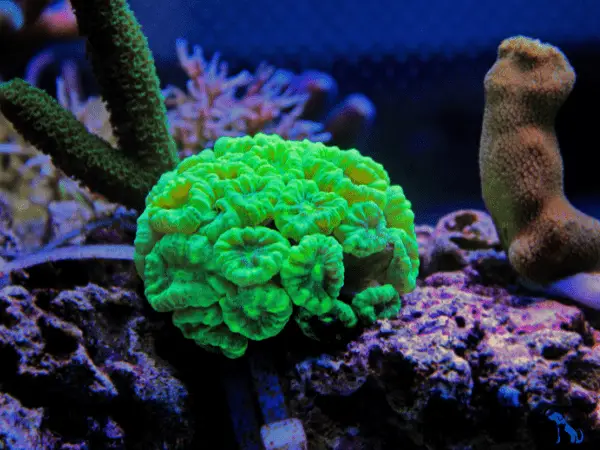
Recommended Lps Corals For Reef Aquariums
| Name | Lighting Needs | Water Flow | Level of Care |
|---|---|---|---|
| Elegance Coral | Moderate | Low to Medium | Easy |
| Duncan Coral | Low to Moderate | Medium | Easy |
| Acan Coral | Moderate | Low | Moderate |
| Sun Coral | Low | Medium to High | Moderate |
LPS corals serve as gracious hosts for a variety of marine life, enriching your reef ecosystem. They offer cozy shelters and nourishing mucus, supporting a symbiotic relationship with your tank’s inhabitants. Selecting the ideal LPS coral enriches your aquarium, paving the way for a flourishing and diverse marine community.
Sps Corals
The underwater realm of SPS corals, short for small polyp stony corals, offers a textured and vivid addition to any reef aquarium. These living jewels bring a dynamic complexity to tanks, but they require a dedicated hobbyist to thrive. Brilliant in hue and diverse in form, SPS corals attract experienced aquarists seeking a challenge and visual splendor.
Colorful And Challenging
SPS corals stand out with their incredible range of colors and patterns. Keeping these corals healthy demands stable water conditions, precise lighting, and optimal flow. Success with SPS corals brings a rewarding display that is second to none. Their colorful presence is well worth the extra care and attention.
Types Of Sps Corals
- Acropora: A diverse genus with many color variations.
- Montipora: Known for its plate-like and branching growth forms.
- Seriatopora: Includes the bird’s nest varieties with needle-like branches.
- Pocillopora: Characterized by its small, compact polyps and robust growth.

Recommended Sps Corals For Reef Aquariums
| SPS Coral | Difficulty | Light Requirements | Water Flow |
|---|---|---|---|
| Acropora millepora | Advanced | High | Strong |
| Montipora digitata | Intermediate | Medium to High | Medium to Strong |
| Seriatopora hystrix | Intermediate | Medium | Medium |
| Pocillopora damicornis | Intermediate | High | Medium to Strong |
Mushroom Corals
Reef aquariums capture the ocean’s wonder, with mushroom corals being a standout favorite. These soft corals charm enthusiasts of all levels with their simple care and hypnotic beauty. Versatile and hardy, they liven up any marine habitat.
Unique And Vibrant
The alluring charm of mushroom corals lies in their vast array of colors and patterns. They transform aquariums into vibrant displays of underwater art. Easy to maintain, they’re ideal for both novice and expert aquarists. The wave-like motion of their caps mesmerizes all who watch.
Types Of Mushroom Corals
- Discosoma Mushrooms: Well-known for their toughness, adaptability, and colorful presence.
- Rhodactis Mushrooms: Sporting a more textured appearance, they offer a tactile dimension to tanks.
- Ricordea Mushrooms: Sought after for their intense coloration and bubbly look.
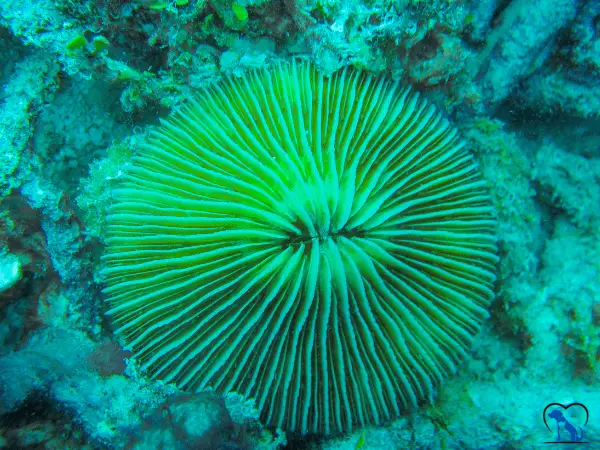
Recommended Mushroom Corals For Reef Aquariums
| Common Name | Color Varieties | Care Level |
|---|---|---|
| Blue Mushroom | Shades of blue | Easy |
| Purple Mushroom | Violet hues | Easy |
| Red Mushroom | Ranges from pink to deep re | Easy |
Each of these mushrooms brings its own flair to the underwater vista. They are great choices for a reef tank looking for a splash of color and intrigue. Low-maintenance and stunning, these mushrooms enrich the visual appeal and biodiversity of reef aquariums.
Zoanthids
Zoanthids are among the most popular corals for reef aquariums, famed for their vibrant colors and hardy nature. These soft corals offer an easy way for beginners to introduce lively hues and fascinating patterns to their marine setups. With their ability to thrive in a variety of water conditions, Zoanthids make an ideal choice for aquarists of all levels.
Colorful And Exquisite
Zoanthids come in a dazzling array of colors. From bright yellows to deep purples, they transform the reef aquarium into a colorful underwater tapestry. Each polyp, surrounded by a halo of tentacles, resembles a tiny, living jewel. Their low light and flow requirements mean that they can be placed in multiple locations within the aquarium.
Types Of Zoanthids
Diversity defines Zoanthids, with numerous species available to hobbyists. They vary significantly in terms of color, pattern, and size. Common types include:
- Palythoa: Known for their larger polyp size.
- Protopalythoa: Similar to Palythoa but generally have a more pronounced oral disc.
- Parazoanthus: Often found in shades of yellow and orange.
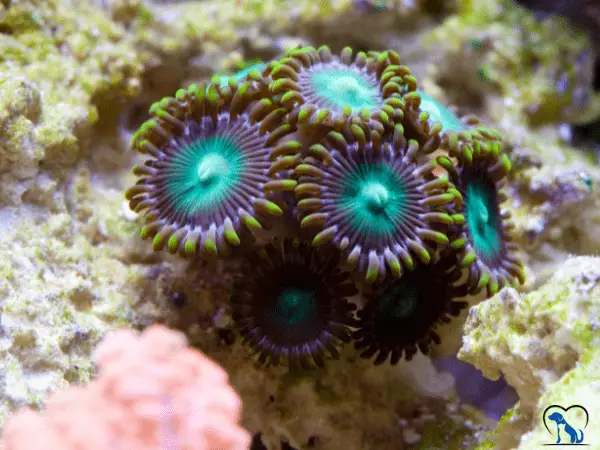
Recommended Zoanthids For Reef Aquariums
Selecting the right Zoanthids can enhance the aesthetic of any reef tank. Here are a few recommended varieties that are both beautiful and beginner-friendly:
- Blue Hornets: With their striking blue and yellow coloration, they’re a spectacular addition.
- Rasta Zoanthids: Vibrant greens and oranges make these polyps stand out.
- Fire and Ice: The vibrant contrast of colors adds a dynamic look to the reef.
All these Zoanthids have distinct appearances that can elevate the visual appeal of your setup. With proper care, including stable water conditions and regular feeding, they will proliferate, creating a stunning, living mosaic in your tank.
Gorgonians
Drift beneath the ocean’s surface, and you’ll find an underwater forest of Gorgonians. Often called sea fans, these soft corals bring sublime beauty to any reef aquarium. They provide a three-dimensional habitat for a plethora of marine life. This section unveils the elegance of Gorgonians and how to make them thrive in your watery paradise.
Elegant And Filter-feeding
The serene beauty of Gorgonians often masks their active role in the aquatic food chain. Their delicate, fan-like structures are not just for show. They are filter feeders who turn microscopic particles from the water into nourishment. This process helps to maintain a clean and healthy environment in your reef tank.
Types Of Gorgonians
Diverse in color and form, Gorgonians split into two main groups: Photosynthetic and Non-Photosynthetic. Photosynthetic varieties, sporting vibrant colors, rely on light to feed. Non-photosynthetic types, often found in deeper waters, thrive on a diet of planktonic food. Each kind offers its own unique flair to your underwater ecosystem.
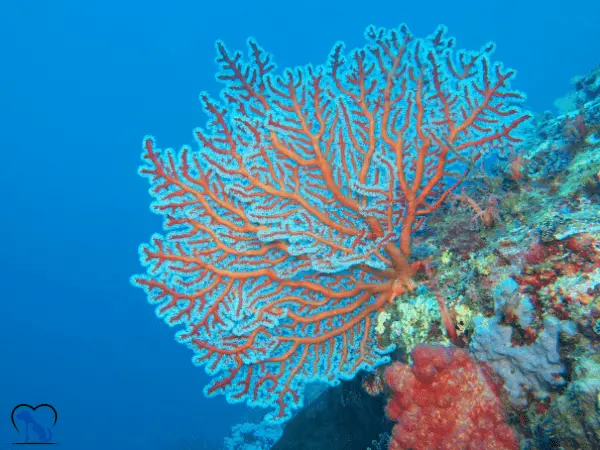
Recommended Gorgonians For Reef Aquariums
Ready to add some Gorgonians to your tank? Here is a list of favorites that are both hardy and beguiling:
- Blueberry Sea Fan (Acalycigorgia sp.) – A feast for the eyes with its vibrant blue hue.
- Purple Sea Rod (Plexaura sp.) – Adds a regal purple touch and is relatively easy to keep.
- Red Sea Whip (Leptogorgia virgulata) – Stands out with its fiery red branches.
Select a species that fits your tank’s conditions. Research lighting, flow, and feeding requirements to ensure your Gorgonians flourish.
Leather Corals
Imagine a lush underwater landscape, teeming with color and life. Leather corals stand out in any reef aquarium with their unique textures and shapes. These corals are essential for aquarists wanting to add diversity to their marine displays. Not only do they provide aesthetic appeal, but they also offer a soft, intriguing structure to your underwater ecosystem.
Hardy And Attractive
Leather corals are known for their exceptional resilience and can thrive in a variety of tank conditions. Their flexibility and hardiness make them ideal for both novice and experienced reef keepers. These corals can bounce back from common mistakes, often with little intervention needed. They boast an array of colors and forms, easily becoming the centerpiece of an aquarium.
Types Of Leather Corals
Several types of leather corals exist. Each varies in color, shape, and size. Main types include:
- Toadstool Leather Corals – Resemble mushrooms with a stout base.
- Cabbage Leather Corals – Look like leafy greens on the ocean floor.
Each type offers different textures that enhance the overall look of a reef aquarium.
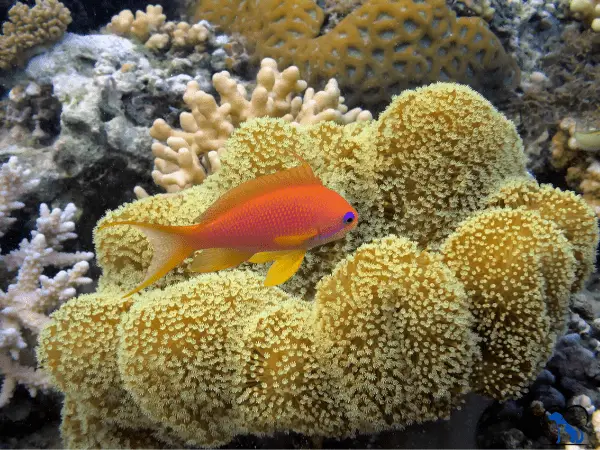
Recommended Leather Corals For Reef Aquariums
When selecting the best leather corals for an aquarium, consider these top picks:
- Devil’s Hand Leather Coral – Known for its hardy nature and rapid growth.
- Blue Ridge Coral – Offers a beautiful blue hue, unique among leather corals.
- Yellow Toadstool – Brightens up the tank with its vivid yellow coloration.
These leather corals are not just eye-catching but also beneficial for the tank’s ecosystem.
Button Polyps (Zoanthus Spp.)
Sprucing up a reef aquarium involves choosing vibrant life that thrives underwater. Among the favorites, Button Polyps, also known as Zoanthus spp., stand out. They bring a splash of color and dynamic growth patterns to any tank. With easy care demands, these corals suit both beginners and seasoned aquarists.
Appearance And Characteristics
Button Polyps attract eyes with their rich, varied hues and distinctive features. With a velvety texture and a mat-like colony formation, these polyps create a captivating underwater tapestry. Each polyp has a central mouth surrounded by tentacles that can range from bright, solid colors to intricate, multi-colored patterns.
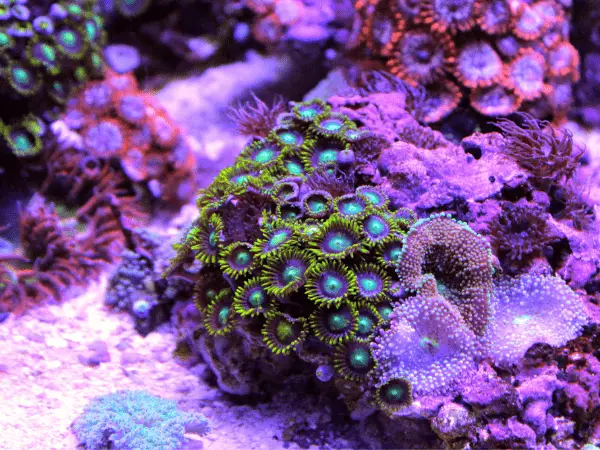
Care Tips And Tank Requirements
For optimal growth, Button Polyps need a specific environment:
- Water quality: Maintain pristine conditions with regular water testing and changes.
- Lighting: Moderate lighting suits them well, though they can adapt to a range of levels.
- Water flow: Aim for moderate water flow to help them feed and remove waste.
Feeding Button Polyps isn’t demanding. They benefit from the zooxanthellae within their tissues that photosynthesize, similar to plants. Supplement with plankton or brine shrimp to promote growth. Always ensure the water temperature stays between 75°F and 80°F, with a pH level from 8.1 to 8.4 for these polyps to thrive.
Green Star Polyps (Briareum Spp.)
These corals are a favorite among reef aquarium enthusiasts for their bright color and simple care. Green Star Polyps, or GSP for short, offer a luminous green hue to any aquarium, creating a living tapestry that’s both captivating and soothing to watch. Let’s dive into what makes them such a perfect addition to your underwater sanctuary.
Growth Patterns And Behavior
Green Star Polyps are renowned for their rapid growth and resilience. These corals spread across surfaces, forming a mat-like structure. They extend their vibrant polyps during the day and retract them at night, creating a dynamic visual effect in your tank.
- Quick spreaders: Cover rocks and tank surfaces fast.
- Day-night cycle: Extend in light, retract in dark.
- Mat-forming: Create continuous carpet of green.
Their behavior makes them an excellent choice for covering unsightly equipment or rockwork, providing a natural aesthetic. Remember, they need adequate space to flourish without encroaching on other corals’ territory.
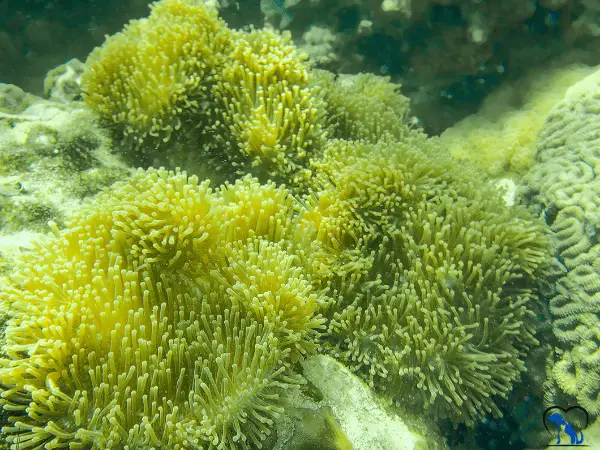
Maintenance And Propagation
Green Star Polyps are incredibly low-maintenance, making them ideal for both beginners and seasoned aquarists. They thrive under moderate lighting and with regular water flow, which helps to keep their polyps free of debris and looking their best.
- Moderate lighting: Enough for vibrant growth without bleaching.
- Regular water flow: Keeps polyps clean and healthy.
- Easy to propagate: Cut a piece and attach to a new surface.
Propagation is straightforward: cut a fragment from the mother colony and attach it to another rock or plug. Before long, you’ll see new polyps emerge, starting a new colony. It’s a satisfying and effortless way to expand your reef or share with fellow hobbyists.
Keep these factors in mind, and your Green Star Polyps will reward you with a stunning, verdant display that brings a piece of the ocean’s majesty right into your home.
Pineapple Brain Coral
Among the myriad of mesmerizing species in the reef aquarium, the Pineapple Brain Coral stands out. Its unique name hints at its intricate design, which resembles the texture of a pineapple. A favorite among coral enthusiasts, this species not only enhances the aesthetic of your marine habitat but also serves as an engaging ecosystem participant.
Unique Characteristics And Coloration
The Pineapple Brain Coral captures attention with its distinctive grooves and ridges. These features closely mimic the exterior of a pineapple, giving this coral its common name. Genuine to their large polyp stony (LPS) coral family, these formations are not only for show; they play a crucial role in the coral’s health and growth.
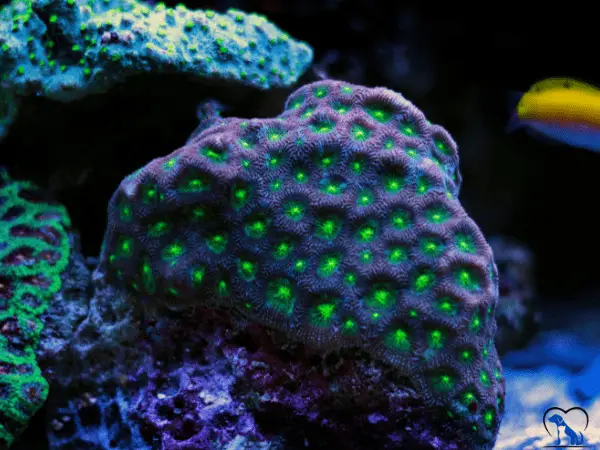
Feeding And Care Considerations
Pineapple Brain Coral thrives with proper care. Here are key points to ensure its health:
- Water Parameters: Keep water clean and stable, with calcium, alkalinity, and magnesium levels checked regularly.
- Lighting: Moderate lighting suits this coral best. It helps promote optimal photosynthesis of the symbiotic algae living in its tissue.
- Feeding: Though equipped with symbiotic algae, supplemental feeding helps growth. Targeted feeding with microplankton is ideal.
- Placement: Position the Pineapple Brain Coral at the bottom to middle part of the tank where it enjoys indirect flow.
By adhering to these care guidelines, your Pineapple Brain Coral will become a healthy, happy centerpiece in your reef aquarium for years to come.
Finger Leather Corals Or Colt Coral (Sinularia Spp.)
Finger Leather Corals or Colt Coral (Sinularia spp.) represent a striking addition to any reef tank. Known for their unique, finger-like projections, these corals come in various colors and sizes. Perfect for both novice and experienced aquarists, Sinularia spp. are hardy and can thrive in a range of tank conditions.
Versatility And Adaptability
Finger Leather Corals boast an impressive ability to adapt. These corals flourish under moderate lighting but can adjust to both higher and lower light levels. Their versatility extends to water flow as well; while they prefer moderate movement, they can also tolerate a variety from gentle to strong currents. This adaptability makes them ideal for various locations within the tank.
| Parameter | Ideal Range |
|---|---|
| Lighting | Moderate (Can adapt to high/low) |
| Water Flow | Moderate (Tolerant to variations) |
| Placement | Flexible (Bottom to Mid-Tank) |
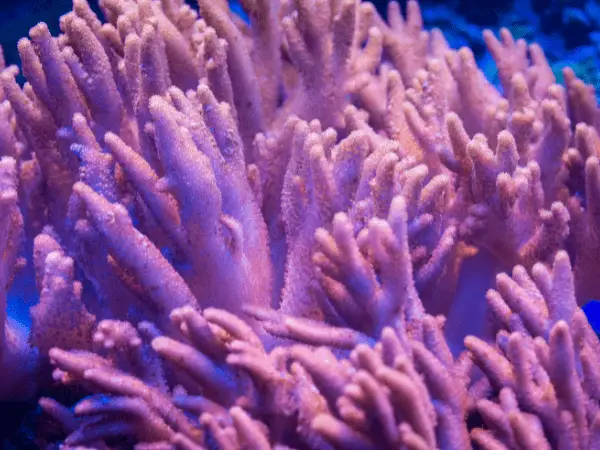
Feeding And Growth Management
Despite being photosynthetic, Finger Leather Corals benefit from occasional feeding. This extra nourishment supports their vibrant color and growth. Offer them microplankton or finely minced seafood. Careful feeding management ensures a steady growth rate without compromising water quality. Trim back any overgrowth to maintain the structure and aesthetics of your reef.
- Photosynthetic: Rely on light for energy.
- Supplemental Feeding: Benefits from microplankton or minced seafood.
- Growth Management: Trim regularly to control size and shape.
Toadstool Mushroom Coral (Sarcophyton Spp.)
Imagine a soft, swaying piece of the ocean’s beauty right in your home. The Toadstool Mushroom Coral (Sarcophyton spp.) is a popular choice. Its easy care makes it a favorite among reef enthusiasts. Known for its unique, umbrella-like appearance, this coral adds movement and grace to any tank.
Mushroom Coral’s Appearance And Behavior
The Toadstool Mushroom Coral stands out with its wide, cap-shaped top. It resembles a mushroom. Below are key visual traits:
- Texture ranges from smooth to slightly bumpy.
- Color varies from tan to yellow to green.
- Coral polyps extend at night for feeding.
During the day, it retracts polyps, showcasing its sleek surface. At night, it comes alive. The coral extends its polyps to capture food.
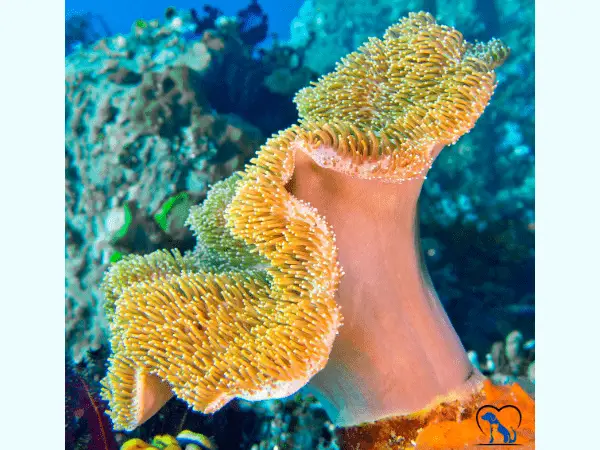
Tank Placement And Maintenance
Setting up your tank for the Toadstool Mushroom Coral involves care. Below are placement and care tips:
| Tank Position | Light | Water Flow |
|---|---|---|
| Mid-level or top | Moderate to bright | Medium to strong |
Ensure ample space around the coral. It grows larger over time. Keep its base secure on rockwork. Regular monitoring of water parameters is crucial:
- Salinity: 1.025-1.027 specific gravity
- Temperature: 75-80°F (24-26°C)
- pH Level: 8.1-8.4
Low nitrates and stable calcium levels promote healthy growth. Regular water changes help maintain the environment.
Conclusion
Selecting the ideal corals for your reef aquarium can be a truly rewarding endeavor. Each coral species adds its unique flair and helps create a vibrant, thriving underwater landscape. Remember, understanding their care requirements is key to ensuring a healthy ecosystem.

